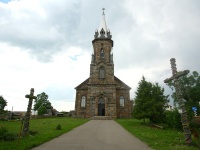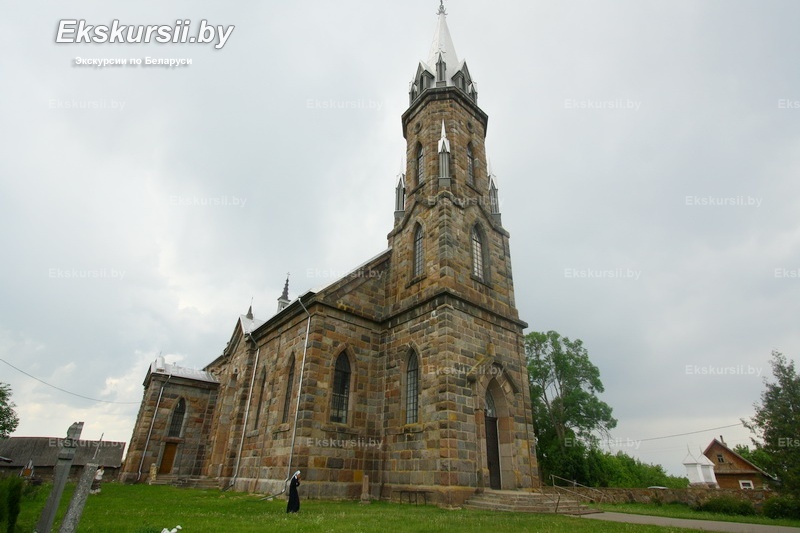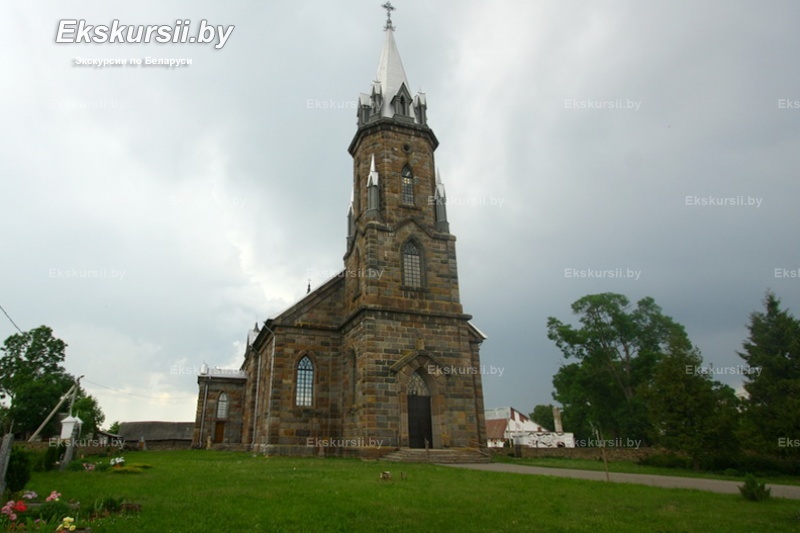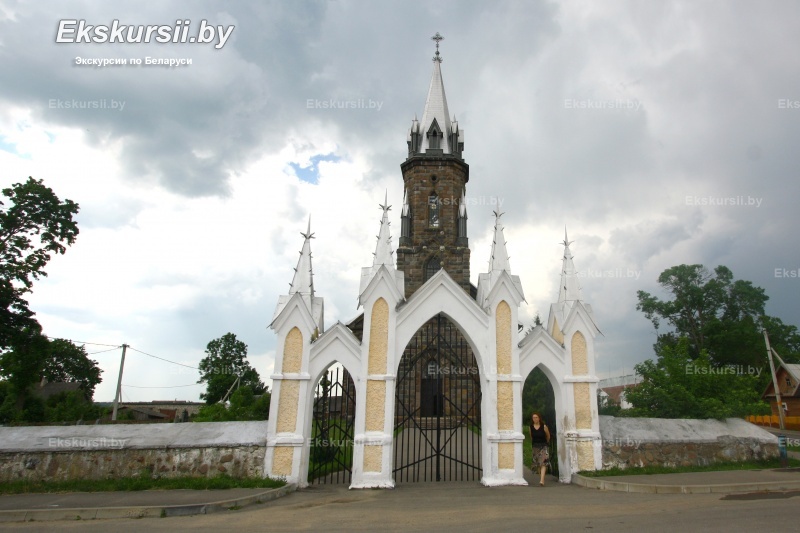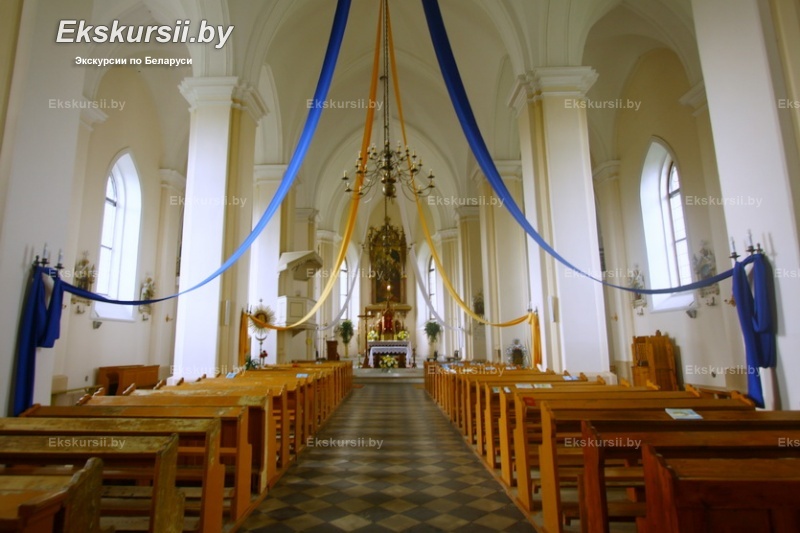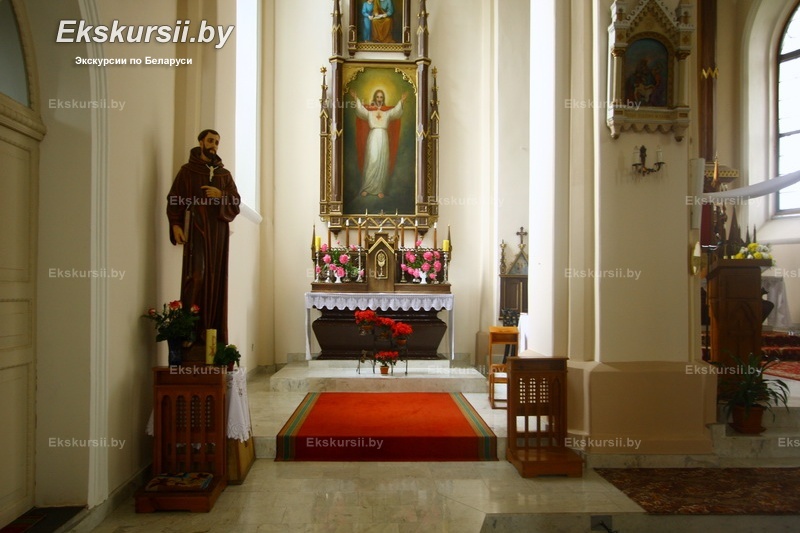- Home
- →
- Attractions
- →
- Church of St. Casimir in Lipnishki
Church of St. Casimir in Lipnishki
The Church of St. Casimir, located in the village of Lipnishki, is an outstanding example of Neo-Gothic architecture from the early 20th century, included in the State List of Historical and Cultural Values of the Republic of Belarus. This Catholic church impresses not only with its exterior but also preserves a centuries-old history of local spiritual life. Secluded in a picturesque setting, it remains an important spiritual and cultural center of the region.
History
The first mention of a church in Lipnishki dates back to 1510, when a wooden Catholic church was built here, likely dedicated to St. Anne. However, the church was burned during the Northern War, and only centuries later did new construction begin.
From 1900 to 1927, a stone church was erected here — thanks to the efforts of parishioners, the support of local patron Alexander Volsky, and the involvement of foreign specialists. The project was designed by French architects, and the construction was carried out by Polish workers and local residents. Stones were collected from nearby fields, and, according to legend, some materials were taken from the ruins of the Gashtold Castle.
Architecture
The church is a rectangular building with an octagonal tower reaching skyward — a hallmark of Gothic and Neo-Gothic style. Architectural elements include dormers, austere stone walls, buttresses, and a three-sided apse. The interior is modest and reserved: columns are decorated with religious carvings, and an organ is installed in the choir loft. The church grounds are surrounded by a stone fence with an elegant Neo-Gothic gate that harmoniously complements the architectural ensemble.
Excursions
You can get a closer look at this architectural masterpiece and immerse yourself in its history during a trip from Minsk to the Church of St. Casimir in Lipnishki. We can organize an individual tour tailored to your preferences and interests. During the trip, you will not only see the church but also learn fascinating details about its history, architectural solutions, and the spiritual life of the local community. This is a great opportunity to dive into the atmosphere of the past and discover one of Belarus’s hidden gems.

